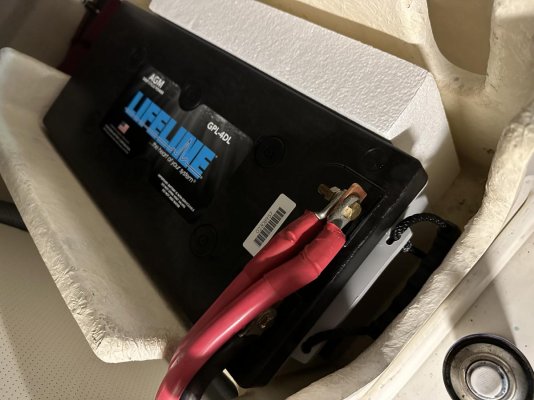eheffa
Senior Member
I think not exactly. Two G31s will likely fit inside an 8D box with room to spare (and 3 G31s won't fit). Two G31s in parallel will usually give you about 200 Ah capacity, where a typical 8D might give you somewhere between 230-255 Ah.
For starting loads, a pair of G31s often (usually?) provides more cranking amps than a single 8D. (I think.)
For house loads, compare 6x 6V GC2s, which are said to fit inside an 8D box... and might give you something like 660 Ah.
-Chris
You are correct Chris.
I could not fit two G31 batteries into the old 8D box so I created a new box that was slightly wider than the 8D box. In almost the same footprint, I could then accommodate 3 x G31 batteries. This gave me a new start bank with ~ 2200 CCA & 330 Ah of storage: Significantly more power than the 8D in almost the same footprint.
But the point remains that the advantages of using an 8D over 3 x G31’s are minimal. The 8D may be a little cheaper with less complex wiring vs the G31 plan with the need for a couple of Busbars and some cables.
The G31’s are easier to work with and provide more power.
(In my case, I had an 8D that was dead and had six good G31 Fireflies looking for a new application so the choice was easy. 3 went to form the new start bank & other 3 joined the stern thruster bank as an auxiliary bank.)
Last edited:


